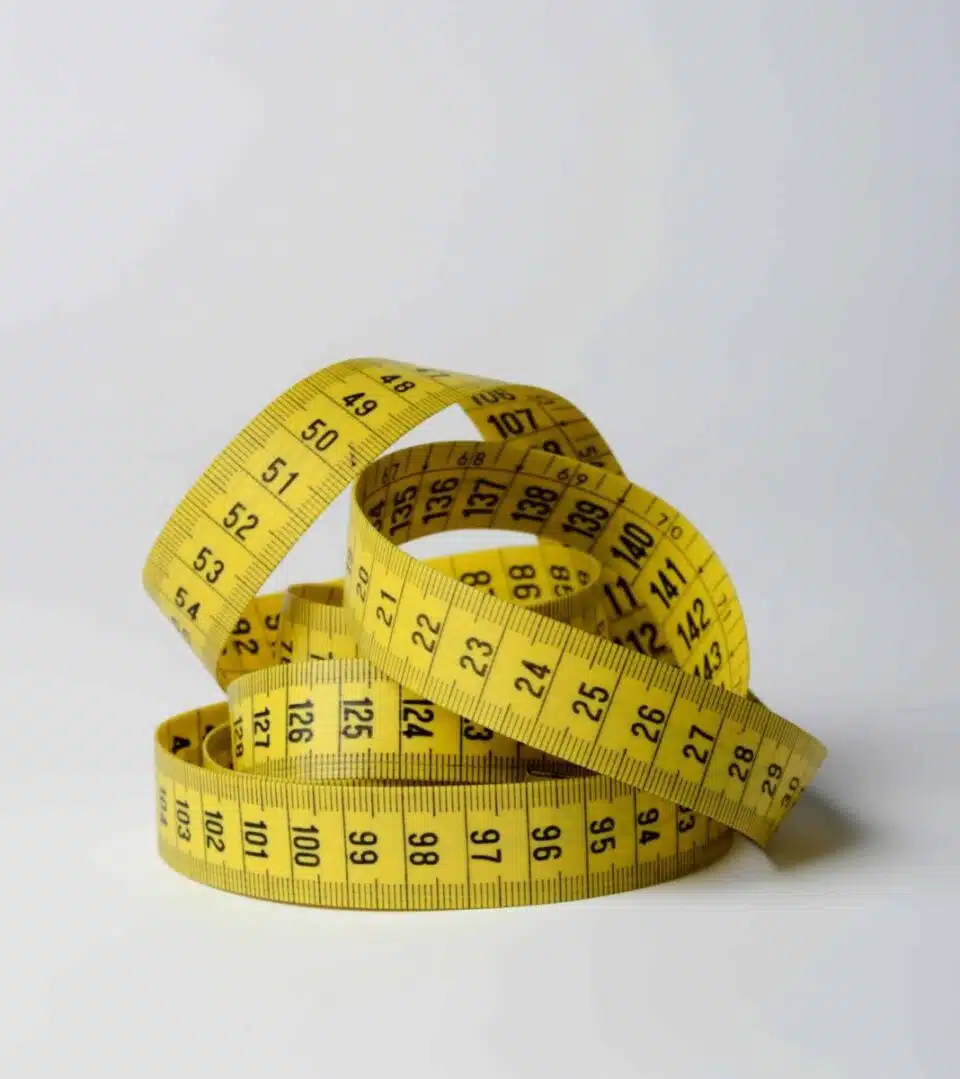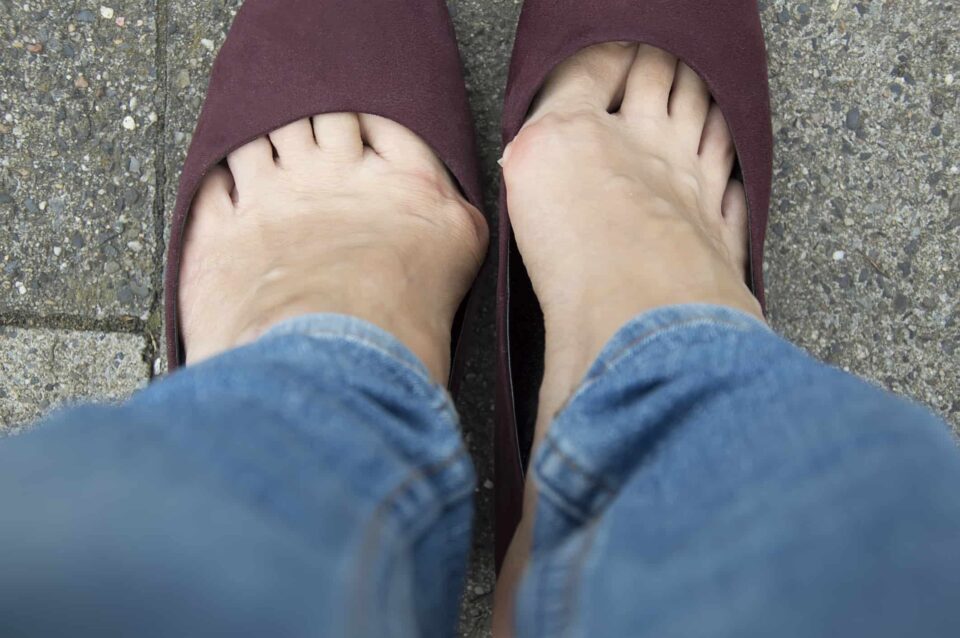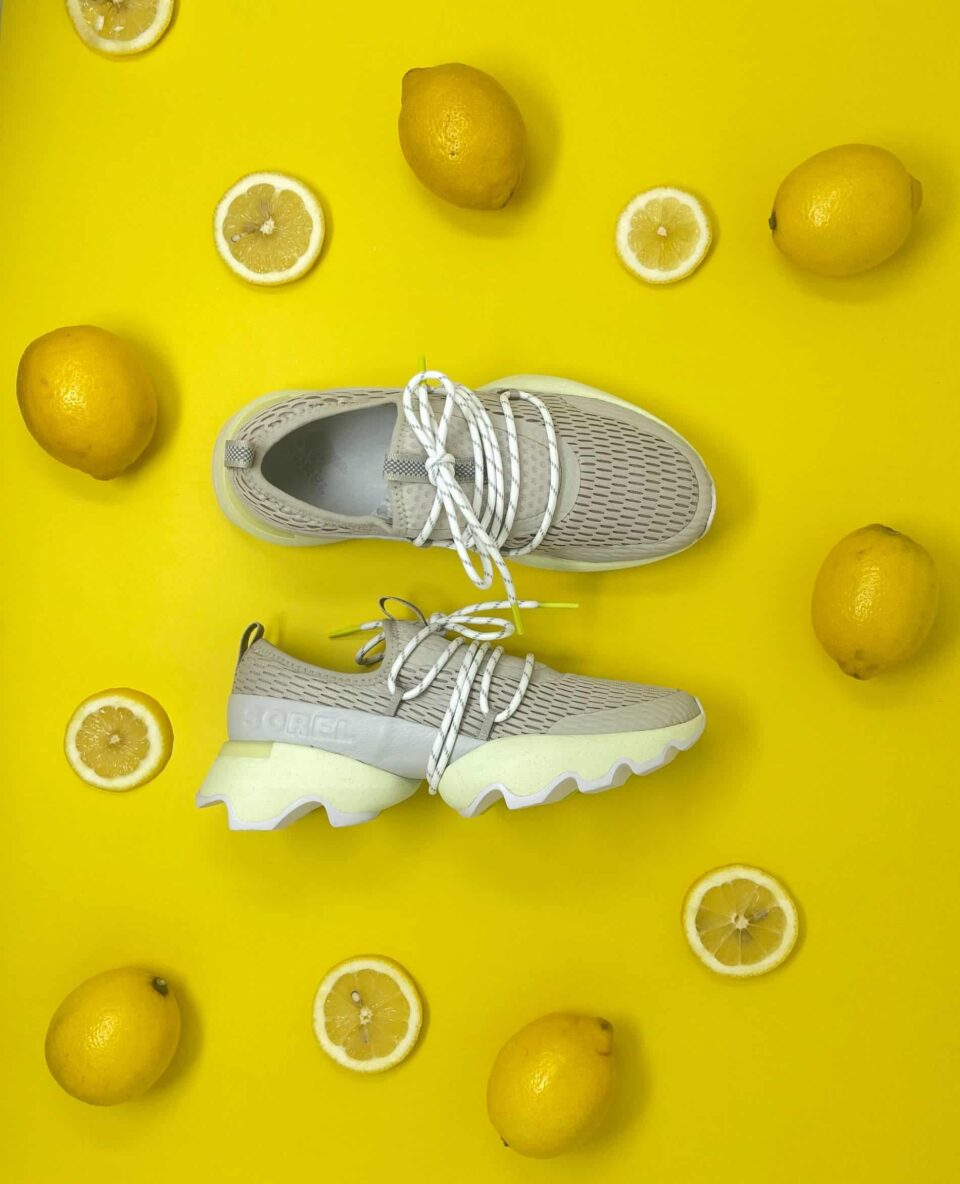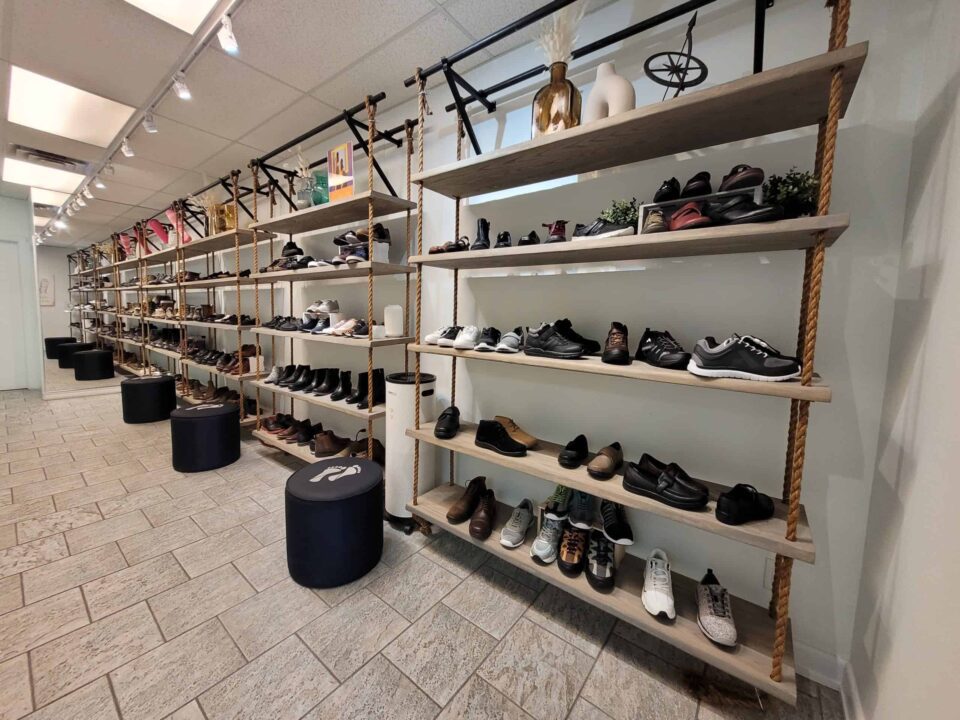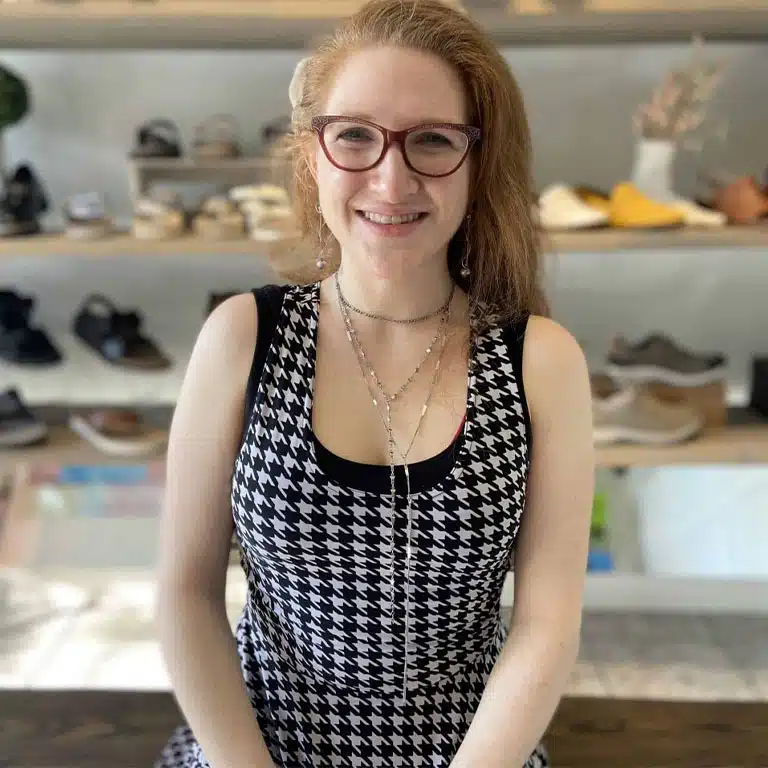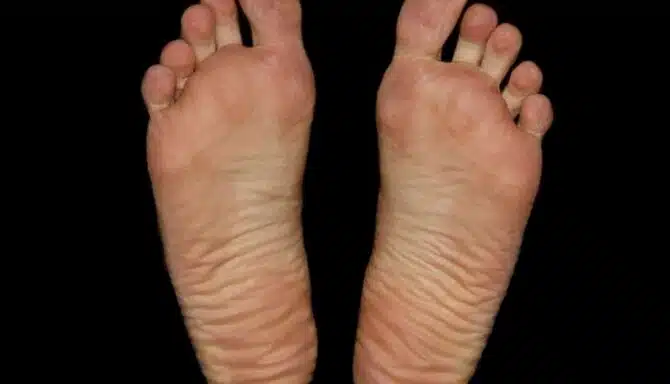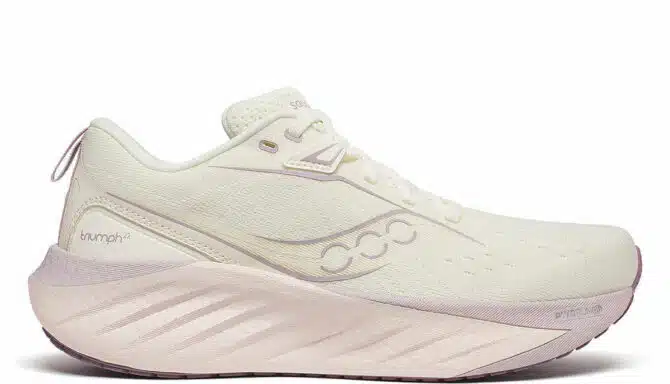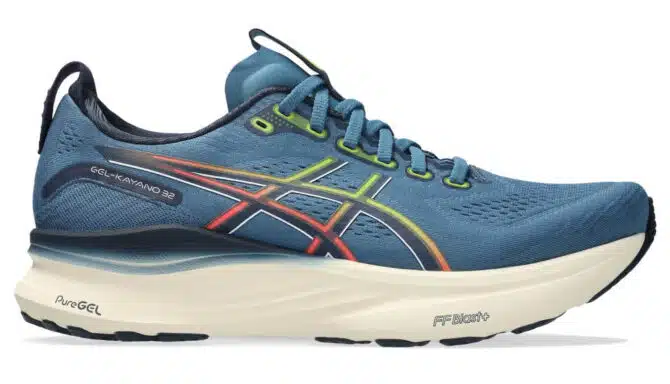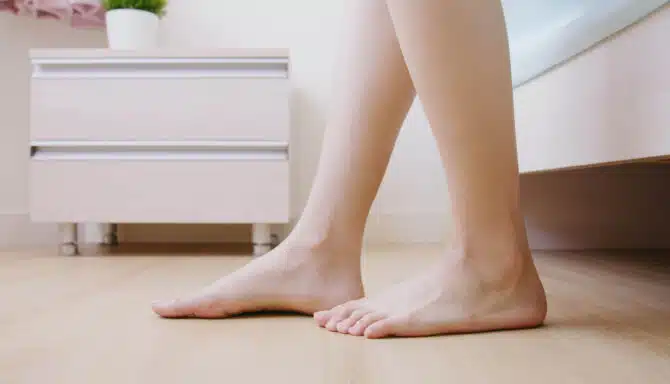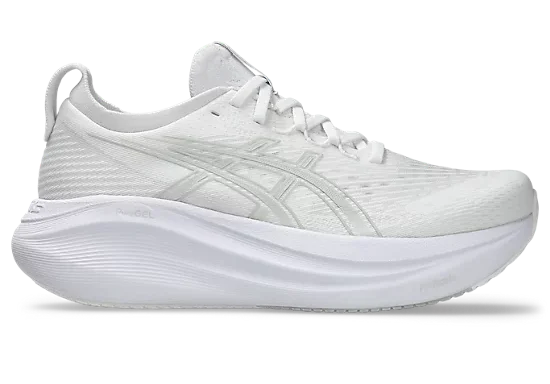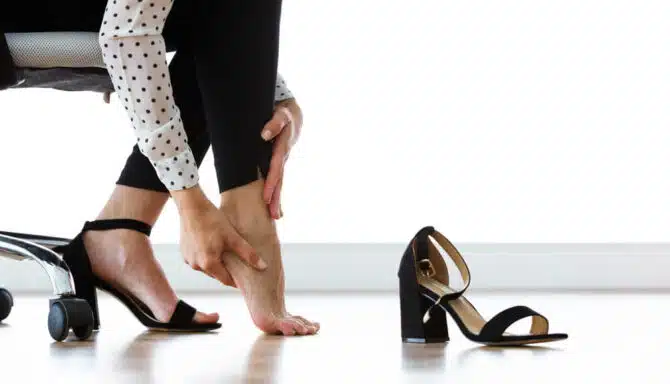February 13, 2025
From athletes to homebodies, toe spacers are all-the-rage these days and provide many benefits. Toe spacer benefits include correcting toe misalignment, better balance and posture, foot pain management and even improved circulation, making them a great foot care tool. They can also help with conditions like bunions and hammertoes. But exactly how toe spacers help your feet comes down to their ability to gently separate the toes into their natural position. Let’s take a look at everything there is to know about how you can use toe spacers to improve your foot health, the different types of toe spacers, and more!
What Are Toe Spacers?
Toe spacers are small devices placed between the toes to create separation and encourage proper toe alignment.
They come in various designs, colours and may be made with different materials, but their primary function is to counteract the tendency of toes to crowd together. This separation helps maintain the foot's natural shape by preventing the toes from overlapping or pressing against each other. While commonly associated with bunion and hammertoe relief or foot pain management, toe spacing devices also play a role in reshaping the way the toes interact with the ground. This improves overall foot mechanics—which in turn can help prevent even more foot conditions. But you don't need to have a foot condition to benefit from toe spacers: many professional athletes use them too!
The way toe spacers work is rooted in biomechanics and how the foot is structured to distribute weight and movement. The toes are meant to splay naturally when standing, walking, or running, which helps with balance and stability. However, when toes are compressed for long periods, the ligaments, tendons, and soft tissues adapt to this restricted position. Toe spacing devices apply gentle but consistent pressure to push the toes apart, stretching these tissues, opening the joint spaces and encouraging them to return to a more natural alignment. This process doesn’t happen instantly but occurs gradually as the foot readjusts, influencing how force is distributed with each step.
If you’re wondering if toe spacers will work for you, you can consult with a foot specialist like a Podiatrist or a Chiropodist. They are also available to purchase at our Toronto foot clinic, in addition to many other useful foot care tools!
https://youtube.com/shorts/fFNkHZ-xqZM?feature=shared
Types of Toe Spacers
Many varieties of toe spacers are made with silicone gel as it’s a durable material and easy to clean. Some toe spacing devices are slim enough to fit comfortably inside shoes, making them ideal for all-day wear, while others are thicker and designed for use while resting. They also come in both four-toe and five-toe variations—the only difference being whether the pinky toe is separated.
According to Runner’s World, four-toe spacers are great for mobility exercises and yoga, while five-toe spacers provide better support during workouts and daily activities.
Since foot conditions like bunions primarily affect the big toe, some spacers are designed specifically for that toe. While technically more of an “aligner” than a “spacer,” the Infracare Ultra Thin Bunion Aligner is a good toe spacer for bunions made from a gentle material called power net and easily slips over the big toe.
https://youtube.com/shorts/8g43ZWreZ1g?feature=shared
Benefits of Toe Alignment and Toe Spacers
Toe spacers help a wide range of individuals—from athletes to those with severe toe deformities and mobility issues. They offer the following benefits:
1. Improved Toe Alignment
Toe spacers help open the joint spaces and restore more of the natural spacing between toes, which is often lost due to years of wearing narrow and restrictive footwear. By gradually repositioning the toes, they encourage a more anatomically correct foot shape and improve overall foot function.
2. Better Foot Stability and Balance
Proper toe alignment allows for a wider and more stable base of support, improving balance and weight distribution. This is particularly beneficial for activities that require strong foot control, such as running, yoga, and weightlifting.
3. Reduced Muscle and Joint Strain
Misaligned toes affect how the foot moves. This means muscles have to compensate and move in ways they weren't designed to, leading to strain on surrounding muscles, tendons, and joints. Toe spacing devices help the foot function more naturally, reducing stress on the plantar fascia, ankles, knees, and even the lower back. Remember, everything is connected!
4. Increased Toe Mobility and Strength
Separating the toes promotes greater movement and activation of the small intrinsic foot muscles inside the foot (there are also many exercises that work these muscles!). Over time, this can improve toe dexterity, making movements like toe spreading and gripping more effective. This is helpful for both everyday activities and athletic performance.
5. Enhanced Circulation
Tightly compressed toes can restrict blood flow to the feet. Toe spacers encourage better circulation by relieving pressure between the toes, potentially reducing numbness, tingling, and cold feet.
6. Reduce Friction
Toe spacers may help reduce the uncomfortable friction in your shoes that leads to skin conditions like calluses, corns and blisters.
Benefits of Toe Spacers for Athletes
Athletes, especially runners, lifters, and those who practice barefoot activities like yoga, or even martial arts, rely on strong, well-aligned feet for optimal performance. Toe spacers encourage natural toe splay, which improves ground contact and enhances stability during movement.
For runners, this means better natural shock absorption and energy transfer with each step, reducing the ground’s harsh impact on the knees, ankles and rest of the foot. Weightlifters benefit from a stronger, more stable base when performing compound lifts like squats and deadlifts, as the toes are better positioned to distribute force evenly through the foot. NFL star George Kittle was even shown using them in the Netflix series Receiver.
Additionally, because toe spacers promote intrinsic foot muscle activation, they help athletes build strength in the smaller stabilizing muscles of the feet, which can reduce the risk of overuse injuries like plantar fasciitis and metatarsalgia, as well as stress fractures (tiny cracks in the bones of the foot).
They can also prevent cramping and foot fatigue, particularly during long training sessions. By keeping the toes properly aligned, spacers relieve tension and improve circulation, helping to prevent that burning or aching sensation after prolonged activity. They also encourage proper foot posture and a normal gait, which can positively affect overall biomechanics.
Benefits of Toe Spacers for Bunions and Hammertoes
Bunions and hammertoes are common foot deformities that develop from prolonged toe misalignment, often made worse by wearing tight or ill-fitting footwear for years. For toe deformities, toe spacing devices help to push the big toe away from the second toe in the case of bunions and allow curled toes to stretch into a more natural position for those with hammertoes. This not only slows the progression of these conditions but can also help alleviate pain caused by pressure and friction between the toes.
For individuals with bunions, toe spacers help counteract the drift of the big toe by encouraging it to stay aligned with its natural position. Over time, this can reduce strain on the first metatarsophalangeal (MTP) joint, which is where bunions form. By keeping the toe straight, spacers can also relieve pressure on the bunion itself, making it easier to wear shoes without pain. While toe spacers won’t reverse a bunion, they can help manage symptoms and prevent further misalignment.
Hammertoes, on the other hand, often develop due to an imbalance in muscle and tendon function, causing one or more toes to remain in a bent position. Toe spacers gently stretch and realigning these toes, reducing stiffness and preventing them from becoming more rigid over time. This can improve comfort when walking and reduce the likelihood of corns or calluses forming due to excessive friction.
Toe spacers offer a simple yet effective way to improve foot health, whether you're looking for better performance in sports or relief from common foot conditions. As always, it’s best to consult with a Podiatrist or Chiropodist before trying them yourself, especially if you aren’t sure what material or type to use.
https://www.youtube.com/shorts/MZQ835Mw0I0
How to Wear Toe Spacers With Your Shoes
To wear toe spacers with shoes, start by selecting a low-profile design that fits comfortably inside footwear. First, put on your spacers while barefoot and ensure they sit snugly between your toes without discomfort.
Next, choose shoes with a wide toe box to accommodate the extra space needed for proper toe splay—narrow or tight-fitting shoes may compress the spacers and reduce their effectiveness. Plus, you shouldn’t wear ill-fitting shoes anyway!
When putting on your shoes, loosen the laces or straps to allow more room, and consider wearing thinner socks to prevent excess bulk. Walk around to check the fit, making sure your toes can move naturally without pressure points. Begin with short wear times, such as 30 minutes to an hour, and gradually increase as your feet adjust.
Remember: only thinner toe spacers will fit into your shoes. Thicker toe spacers like Yoga Toes are designed to be worn barefoot.
https://www.youtube.com/shorts/sXF8lWHad0g
